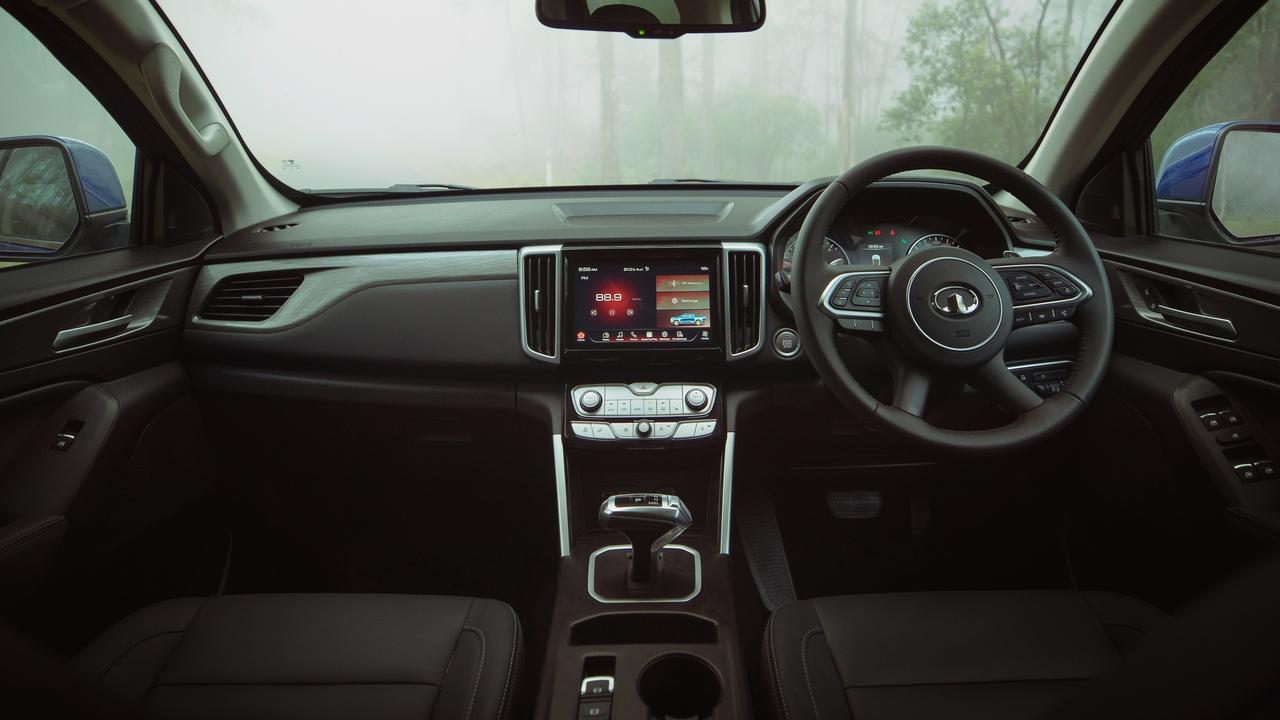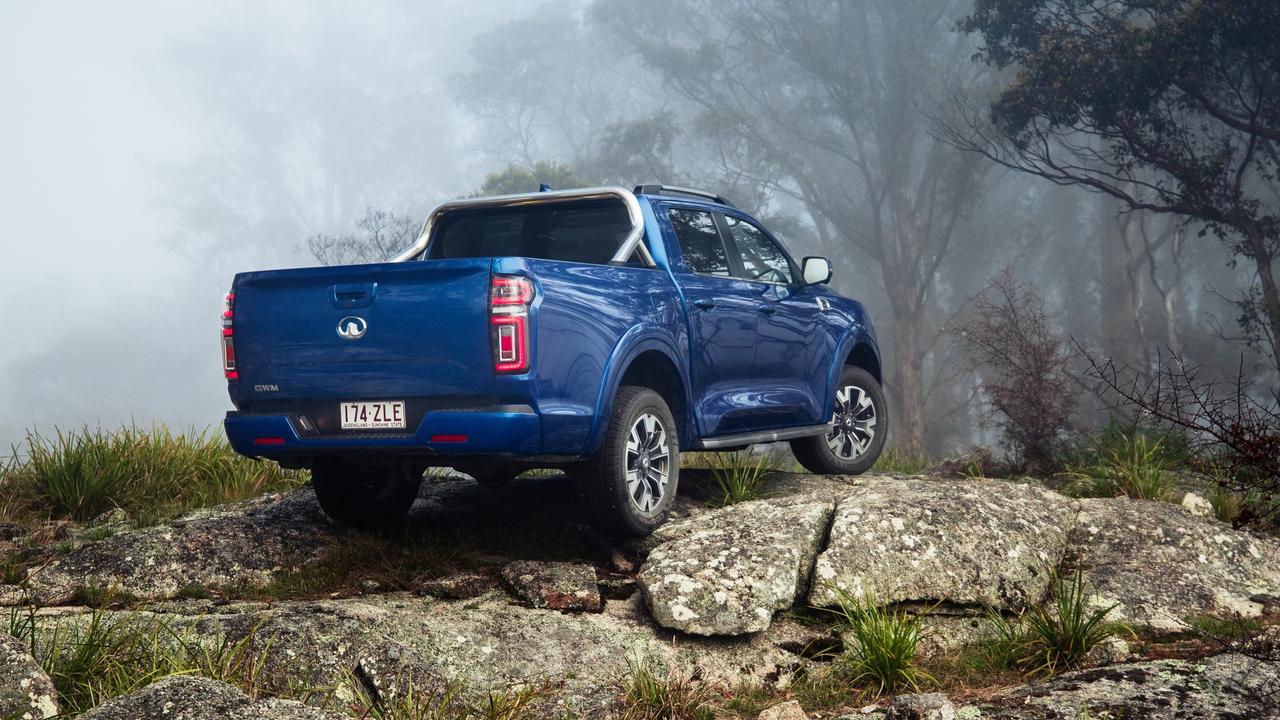GWM Ute review proves great leap forward in performance
Previous Steed models from Great Wall took some wrangling, but the new GWM Ute dual-cab breed has remarkably better bloodlines

Previous Great Wall Motors deliveries were far from grandiose.
While sales a few years back were strong off the back of cheap pricing, intense competition from Mitsubishi saw the Japanese carmaker’s Triton take control of the bargain buys market.
Another problem was product. The former Great Wall Steed was below average in just about every facet.
Now the brand is back wearing GWM badge and a new logo. The new emblem has a similarity to the Google Maps symbol, and it’s indicative of the brand’s new direction.
The GWM Ute is much improved over the old dual-cab Steed.
Prices are still the main attraction, with the line-up starting from $33,990 drive-away. For $38,585 there’s the mid-range Cannon-L, which comes with a heap of kit for the coin.

VALUE
Luring buyers away from more established brands can be difficult, but GWM attracts attention with the price and sweetens the deal with a long list of features.
This Cannon-L sits mid-range, and equipment highlights include a nine-inch touchscreen with Apple CarPlay and Android Auto, heated front seats, man-made leather, power-adjustable driver’s seat, push-button start, stainless steel sports bar and 18-inch alloys.
Metallic paint options cost $595 extra, and colour options are white, silver, red, blue and black.
Peace of mind comes with a seven-year unlimited kilometre warranty (key difference for commercial buyers is the distance coverage is restricted to 150,000km) with five years of roadside assist. Only Mitsubishi beats that offer with a 10-year/200,000km warranty as long as buyers maintain dealer servicing.
Capped price servicing is not available. Maintenance is required annually or every 10,000km — the latter is short, most servicing intervals are now 15,000km.

SAFETY
Strong technology levels are maintained across the GWM Ute range. Not long ago, dual-cabs lagged well behind passenger cars in this realm, but with more families using utes as their primary transport, manufacturers have raised the safety bar.
Australia’s crash testing authority is yet to examine the Ute. Previous tests of Great Wall products haven’t been positive, yet some mandatory inclusions provide a good platform for a high score.
The inclusion of autonomous emergency braking, which can detect cyclists and pedestrians as well as other vehicles and apply the brakes to avoid or lessen a frontal impact, along with radar cruise control to maintain set distances are life-saving features.
Lane keeping assistance can help steer the Ute between clearly marked road lines, traffic sign recognition keeps a constant eye on speed zones, while cameras views are pieced together for 360-degree vision when parking.

COMFORT
Balancing utilitarian needs and good looks, the cabin feels like a well put together environment.
Side steps help entry and exit, but front pillar grab handles would be a welcome inclusion.
Most operations are straightforward with limited chances of confusion. There are some quirks and frustrations, like changing the driver’s 3.5-inch digital display which takes some analysis, and there is a constant reminder that you’re driving a Chinese product with the language characters appearing above the camera view when reversing.
Storage options are limited, with only a small console and a compact space in front of the stubby gear shifter that can handle a phone. Two cup holders in the console look after takeaway coffees, with doors capable of accommodating bottles.
Back seat passengers are often short-changed in utes, but the GWM offers reasonable leg and head room, along with the benefits of having air vents and one USB port for keeping devices charged. Another two USBs are located upfront.
Boasting a deep tray, it’s an impressive load area with a pair of tie-down hooks at both ends. An extendible rear ladder makes climbing aboard simpler.
The tub comes with a protective layer and a payload of 1050kg.

DRIVING
Strong getting away from a standing start, the turbocharged four-cylinder turbo diesel feels swift when unladen. Apply the throttle with too much enthusiasm and the rear wheels chirp when in two-wheel mode.
With Sport, Eco and Normal drive modes available, it’s a vastly improved driving experience over the old Steed. Like many other dual-cabs, the ride can be unsettled when unladen and the steering vague, but it’s an easy driving experience, whether on the open road or around town.
The steering assist function can be too intrusive — it’s easily turned off if required.
During our tenure the diesel particulate filter cleaning function occurred regularly on highway journeys. It all happens automatically, so drivers don’t need any intervention.
Towing capacity was initially rated at 2250kg but was re-homologated and certified earlier this year and is now rated at 3000kg with a 10 per cent maximum downball weight.
Fuel consumption was surprisingly thrifty with some highway travels, dropping to below eight litres for every 100km. That’s about 1.5L/100km less than the official figure from GWM.

HEAD SAYS
There’s no premium for the badge on the grille here. Value comes in spades.
HEART SAYS
The dual-cab suits my lifestyle, with a long warranty and strong features offering peace of mind and ample life luxuries.
ALTERNATIVES
Mitsubishi Triton GLX+ $42,740 D/A
Less features than the GWM, but a tried and trusted offering powered by a 133kW/430Nm 2.4-litre 4-cyl turbo diesel. Braked towing capacity of 3.1 tonnes and average fuel consumption of 8.6L/100km. Warranty coverage of 10 years/200,000km.
SsangYong Musso ELX Auto $35,990 D/A
Under the bonnet is a 133kW/420Nm 2.2-litre turbo diesel, with a towing capacity of 3.5 tonnes. Average fuel consumption of 8.9L/100km. Boasts the same warranty as the GWM, with the current special offer inclusive of three years of free servicing. This model lacks some of the best safety kit found on the next model up.
VERDICT
Underpowered compared to some rivals, the GWM Ute is a surprisingly well-rounded performer. Those looking to tow regularly would be best to find something more hairy-chested. But anyone chasing a lifestyle dual-cab will find it a compelling option for the price.
Originally published as GWM Ute review proves great leap forward in performance







